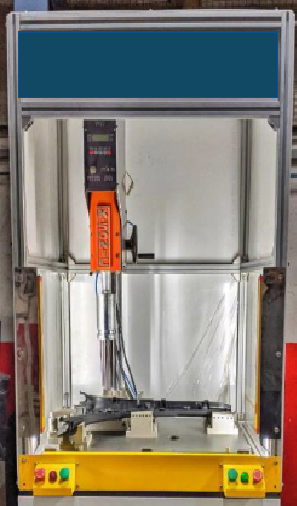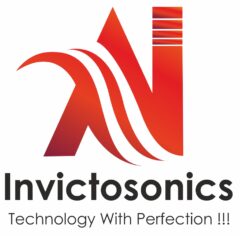Ultrasonic Welding Technology
ULTRASONIC WELDING
Ultrasonic welding is a solid state welding process in which two work pieces are bonded as a result of a pressure exerted to welded parts combined with application of high frequency acoustic vibration (ultrasonic). It uses the principle of conversion of high frequency electrical energy into high frequency mechanical energy. This mechanical energy is a vertical motion excess of 15000 cycles/second. Ultrasonic vibration causes friction between parts which results in a closer contact between two surfaces with simultaneous local heating of the contact area. Interatomic bonds formed under these conditions provide strong joint.
The components to be joined are held together under pressure and subjected to vibrations, usually at a frequency of 15 kHz to 6o kHz. The vibrations produced by a welding sonotrode or sonometer or horn are used to soften or melt the thermoplastic material at the joint line. Welding times are lower than 3 seconds. The welding can proceed with or without the application of external heat. Thickness of the welded parts is limited by the power of the ultrasonic generator.

Equipment’s:
Power Supply:
The ultrasonic welding needs high frequency and high voltage power supply. This power is needed by the transducer to generate vibrations.
Transducer:
Transducer is a device which can convert high frequency electric signal into high frequency mechanical vibration. This is connected with the welding head. The converter or piezoelectric transducer used in this welding process.
Booster and Horn:
The mechanical vibration created by the transducer is supplied to the booster which amplifies this vibration and supply to the horn. Horn is a device which supply this amplified vibration to the welding plates.
Fixture or clamping devices:
This device is essential in the ultrasonic welding. This uses either electrical, hydraulic, pneumatic or mechanical energy to hold the plates into desire location.
Working of Ultrasonic Welding Equipment
In ultrasonic welding, electrical power supply is applied to a transducer at a frequency of 50 to 60 Hz into a high frequency electrical supply operating at 20, 30 or 40 kHz. Here transducer converts electrical energy into mechanical energy. This electrical energy is supplied to the transducer which converts to mechanical energy at ultrasonic frequencies. The vibrating energy is then transmitted through the booster that increases the amplitude of the acoustic wave. The acoustic waves are then transmitted to the horn . The horn is an acoustic tool that transfers the vibrating energy directly to the components being assembled and it additionally applies a welding pressure.
The vibrations are transmitted through the workpiece to the joint area. The parts are “scrubbed” together under pressure at 20,000 cycles per second. Here, the vibrating energy is converted to heat through friction. It then softens or melts the thermoplastic and joins the components together. As the atoms are combined between components to be welded, a real metallurgical bond is made. Most of the thermoplastic materials can be ultrasonic weldable.
The sequence of operations is as follows: –
Step 1: The parts to be welded are placed into a locating holder.
Step 2: The ultrasonic tool descends to apply a clamping pressure between the weld parts
Step 3: When ultrasonic power flows for a given time, the tool then vibrates at a frequency 1- 40kHz.
Step 4 : The base metals are then mechanically mixed causing a metallurgical bond between parts . The parts are immediately welded. There is no hold time or curing time .
Step 5: Force is removed and machine deloaded
Advantages, Limitations and Applications of Ultrasonic Welding
Advantages of Ultrasonic Welding :
1. Since no bulk heating of the work pieces is involved, there is no danger of any mechanical or metallurgical bad effects.
2. The process is excellent for joining thin sheets to thick sheets.
3. Local plastic deformation and mechanical mixing result into sound welds.
4. Dissimilar metals may be joined.
5. High quality weld is obtained.
6. The process can be integrated into automated production lines.
7. Moderate operator skill level is enough.
8. The process is fast, economical and automated.
9. It is used in mass production up to 60 parts per minute.
10. It ensures increased flexibility and versatility.
11. It produces high strength joints.
12. Very thin materials can be welded.
Limitations of ultrasonic Welding :
1. Only small and thin parts may be welded.
2. Work pieces and equipment components may fatigue at reciprocating loads provided by ultrasonic vibration.
3. Work pieces may bond to the anvil.
4. It is not suitable for ductile materials since they yield under the stresses.
5. It needs specially designed joints.
6. Ultrasonic vibrations can damage electrical components.
7. Tooling costs for fixtures are high.
Applications of Ultrasonic Welding :
1. Ultrasonic welding is used mainly for bonding small workpieces in electronics, manufacturing communication devices, medical tools and watches.
2. It is used in automotive, medical and toy production.
3. It is used in health care industries due to clean welds.
4. Ring-type continuous welds can be used for hermetic sealing.
5. It is-used in sealing and packaging, aircraft, missiles and fabrication of nuclear components.
6. It is also used in armatures, slotted commuters, starter motor armatures, joining of braded brush wires, brush plates and wire terminals.
7. Ultrasonic welding is used in the automotive industry to fabricate headlamp parts, dashboards, buttons and switches, fuel filter, fluid vessels, seat-belt locks, electronic key fobs, lamp assemblies and air ducts.
8. In electronic appliances such as switches, sensors and data storage keys are fabricated using ultrasonic welding.
9. Ultrasonic welding is also used to make medical parts such as filters, catheters, medical garment and masks.
10. It is used in welding of tubes to sheets in solar panels.
11. Packing applications such as blister packs, pouches, tubes, storage containers and carton spouts can be fabricated using ultrasonic welding,
ULTRASONIC WELDING MACHINE

